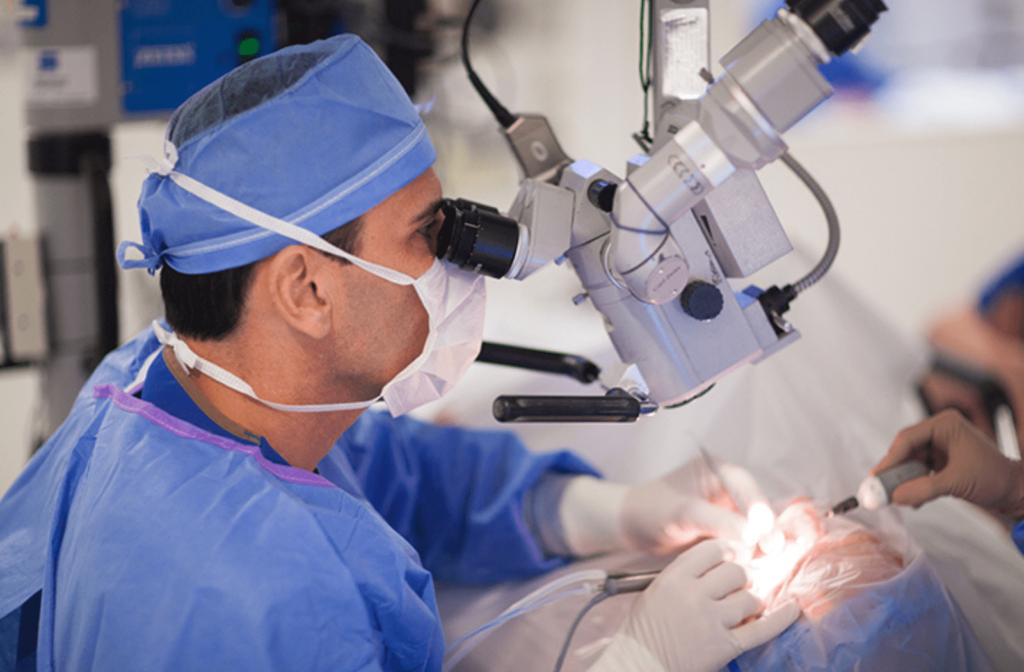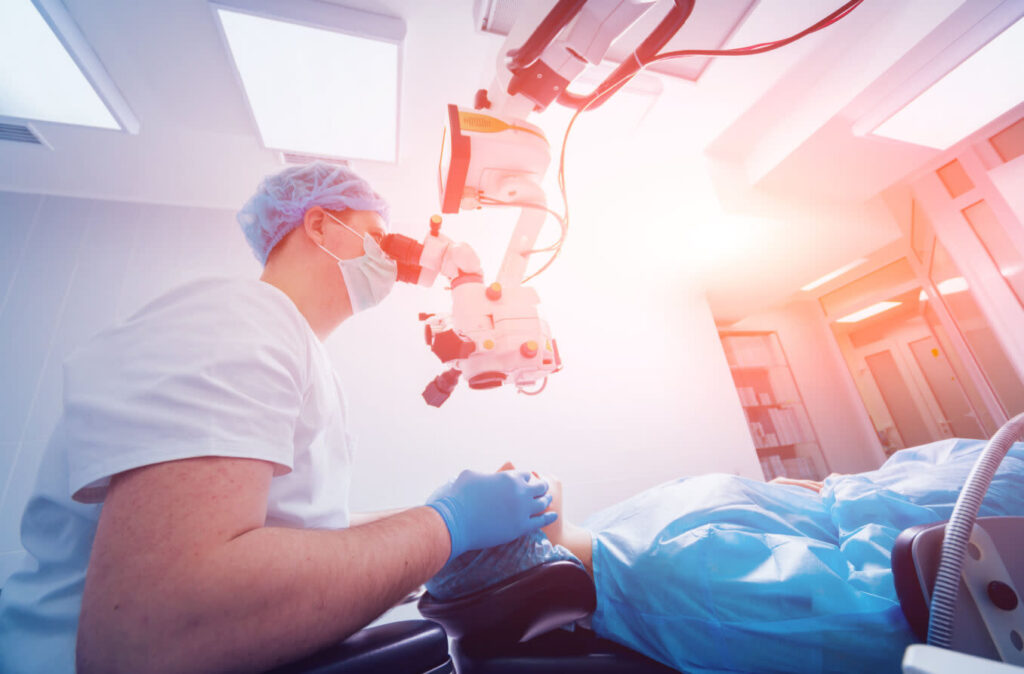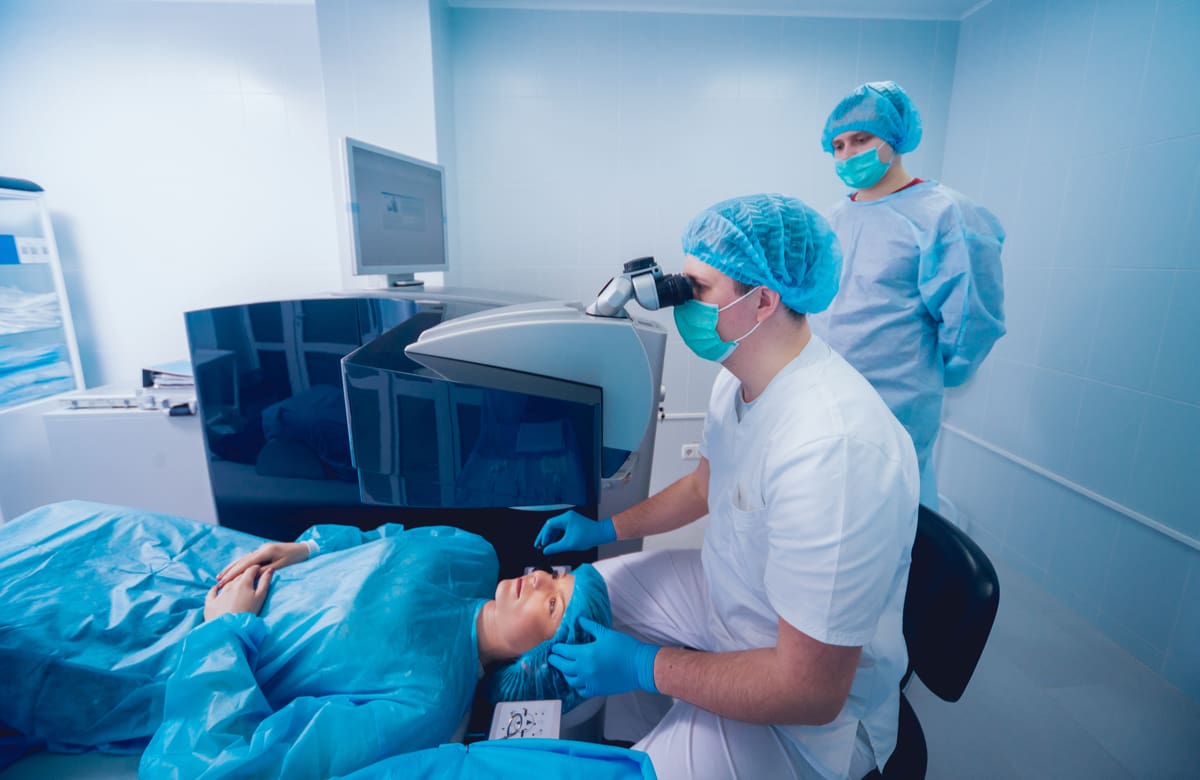Cataract eye surgery has come a long way in recent years, thanks to advancements in medical technology. These advances have revolutionized the treatment of cataracts, making the surgeries safer, more efficient, and providing better visual outcomes for patients. In this article, we will explore the latest techniques in cataract eye surgery and discuss their benefits and potential risks.
Understanding Cataract Eye Surgery
Cataract eye surgery is a procedure performed to remove a cataract, a clouding of the natural lens inside the eye, and replace it with an artificial lens called an intraocular lens (IOL). This surgery is typically performed on an outpatient basis and is considered one of the most common and successful surgical procedures worldwide.
A cataract can develop as a result of aging, genetics, injury, or certain medical conditions. It causes blurred vision, difficulty seeing in low light, glare sensitivity, and color distortion. Cataract eye surgery aims to restore clear vision and improve a person’s quality of life.
What is Cataract Eye Surgery?
Cataract eye surgery involves making a small incision in the cornea, the clear front part of the eye. The surgeon then uses one of several techniques to break up the cloudy lens and remove it from the eye. Once the cataract is removed, the IOL is inserted to replace the natural lens and restore vision.
The surgery can be performed under local or general anesthesia, depending on the patient’s preference and the surgeon’s recommendation. The entire procedure usually takes less than an hour, and most patients experience improved vision shortly after surgery.

The Importance of Cataract Surgery
During the early stages of cataract development, vision may only be slightly affected, and many individuals can manage their symptoms with corrective eyeglasses or contact lenses. However, as cataracts progress, they can significantly impact daily activities, such as reading, driving, and recognizing faces.
Delaying cataract surgery can lead to further deterioration of vision and may increase the risk of complications during surgery. Therefore, it is essential to consult with an ophthalmologist and consider surgery when cataracts start interfering with daily life.
It is worth noting that cataract surgery has come a long way since its inception. Technological advancements have revolutionized the procedure, making it safer and more effective than ever before. Surgeons now have access to advanced tools and techniques that allow for precise incisions and better outcomes.
Furthermore, the choice of intraocular lens has expanded, providing patients with more options to suit their individual needs. There are now multifocal and toric lenses available, which can correct not only cataracts but also other vision problems such as astigmatism and presbyopia. This means that patients can potentially achieve clear vision at various distances without the need for glasses or contact lenses.
Additionally, cataract surgery has a quick recovery time, allowing patients to resume their normal activities within a few days. However, it is important to follow the post-operative instructions provided by the surgeon to ensure proper healing and minimize the risk of complications. Learn more about post-operative instructions on https://www.osscarolina.com/post-operative-instructions-general/
In conclusion, cataract eye surgery is a highly effective procedure that can restore clear vision and improve the quality of life for individuals with cataracts. With advancements in technology and a wide range of lens options available, patients now have more choices than ever before. If you are experiencing symptoms of cataracts, it is advisable to consult with an ophthalmologist to discuss your options and determine the best course of action for your specific needs.
Traditional Cataract Surgery Techniques
Traditionally, cataract surgery involved removing the entire natural lens, including its capsule. However, with advancements in surgical techniques and equipment, newer approaches have emerged, offering improved outcomes and faster recovery times.
One of the key considerations in traditional cataract surgery techniques is the preservation of the posterior capsule, a thin, transparent membrane that holds the lens in place. This structure plays a crucial role in maintaining the stability of the intraocular lens (IOL) post-surgery and reducing the risk of complications such as retinal detachment.
Intracapsular Cataract Surgery
Intracapsular cataract surgery was a common technique used in the past. It involved removing the entire lens, including its surrounding capsule. This technique is rarely performed today due to the increased risk of complications and higher chances of postoperative lens dislocation.
While the intracapsular approach provided the advantage of removing the entire cataract in one piece, it also posed challenges in IOL placement and stability. The risk of inflammation and edema was higher with this technique, leading to suboptimal visual outcomes in some cases.
Extracapsular Cataract Surgery
Extracapsular cataract surgery is another traditional technique that is still used in certain cases. In this procedure, the surgeon makes a larger incision to remove the cloudy lens while leaving the posterior capsule intact. The IOL is then implanted in front of the capsule. Although extracapsular surgery provides better visual outcomes than intracapsular surgery, there are still more advanced techniques available.
By preserving the posterior capsule, extracapsular cataract surgery offers improved IOL stability and reduces the risk of complications such as capsular opacification. This technique allows for a larger range of IOL options, including multifocal and toric lenses, catering to patients with specific visual needs and preferences. To read more about capsular opacification click here.
Modern Cataract Surgery Techniques
Modern cataract surgery techniques offer significant improvements in safety, precision, and patient comfort. Two of the most notable techniques are phacoemulsification and laser-assisted cataract surgery.
Phacoemulsification Technique
Phacoemulsification is the most commonly used cataract surgery technique worldwide. This technique utilizes ultrasound energy to break up the cloudy lens into tiny fragments that are then gently suctioned out of the eye. The incision made for phacoemulsification is much smaller than in traditional techniques, promoting faster healing and reducing the risk of complications.
But did you know that phacoemulsification also allows for the preservation of the natural lens capsule? This is important because the lens capsule provides support for the intraocular lens (IOL) that replaces the cloudy lens. By preserving the lens capsule, the IOL can be securely placed, reducing the risk of dislocation or movement.
Furthermore, phacoemulsification allows the surgeon to implant the IOL through a small incision, eliminating the need for large sutures and minimizing astigmatism. This means that patients may experience improved visual outcomes and reduced dependence on glasses or contact lenses after surgery. Additionally, the smaller incision size enables a quicker visual recovery with less postoperative discomfort compared to other approaches.

Laser-Assisted Cataract Surgery
Laser-assisted cataract surgery is a newer technique that utilizes femtosecond laser technology to perform key steps of the surgery. The laser is used to create precise incisions in the cornea, break up the cataract, and soften the cloudy lens for easier removal. This technique offers enhanced precision and customization, leading to improved visual outcomes.
But what sets laser-assisted cataract surgery apart is its ability to correct astigmatism during the procedure. By using the laser to make precise incisions, the surgeon can reshape the cornea and correct astigmatism, potentially reducing the need for glasses or contact lenses after surgery. This can be particularly beneficial for patients with astigmatism, as it addresses both their cataract and astigmatism in one procedure.
However, it is worth noting that the cost of laser-assisted cataract surgery may be higher compared to traditional cataract surgery techniques. The use of advanced laser technology adds an additional expense to the procedure. It is important for patients to discuss the potential benefits and costs with their ophthalmologist to make an informed decision.
The Future of Cataract Surgery
The field of cataract surgery continues to evolve, with ongoing advancements on the horizon. Emerging technologies show promise in enhancing surgical outcomes, improving patient experience, and minimizing the risks associated with the procedure.
Emerging Technologies in Cataract Surgery
One exciting advancement is the development of adjustable IOLs, which allow for postoperative fine-tuning of vision. These IOLs can be adjusted either manually or with the use of light-based technology, enabling the correction of residual refractive errors without the need for additional surgical procedures.
Imagine a world where patients can have their vision customized to perfection after cataract surgery. With adjustable IOLs, ophthalmologists can fine-tune the power of the lens, ensuring optimal visual acuity for each individual. This personalized approach not only improves patient satisfaction but also reduces the need for additional surgeries, saving time and resources.
Another area of active research is the use of robotics in cataract surgery. Robotic systems offer increased precision and stability, potentially reducing the risk of human error and improving outcomes. While still in the experimental stage, robotic-assisted cataract surgery shows promise for the future.
Picture a robotic assistant working alongside a skilled surgeon, providing steady hands and precise movements during cataract surgery. This collaboration between human expertise and robotic precision could revolutionize the field, ensuring consistently excellent results and minimizing the potential for complications.
Predicted Trends in Cataract Surgery Techniques
In the coming years, it is expected that cataract surgery techniques will continue to evolve with a focus on further improving safety, accuracy, and patient satisfaction. With ongoing advancements in lens technology, the development of IOLs that can correct presbyopia and provide enhanced vision at various distances is likely.
Imagine being able to see clearly at all distances without the need for glasses or contact lenses. With the development of multifocal or accommodating IOLs, patients may regain their ability to read, drive, and enjoy activities without visual limitations. This advancement not only improves quality of life but also reduces the dependence on corrective eyewear.
Additionally, the integration of artificial intelligence and augmented reality into cataract surgery may streamline procedures, improve surgical decision-making, and enhance surgeon training.
Imagine a surgeon wearing augmented reality glasses, receiving real-time guidance and information during the procedure. With the assistance of artificial intelligence algorithms, surgeons can make more precise incisions, accurately position IOLs, and navigate complex anatomical structures with ease. This integration of technology not only enhances surgical outcomes but also allows for continuous learning and improvement within the field.
Risks and Benefits of Advanced Techniques
While advanced cataract surgery techniques offer numerous benefits, it is essential to consider the potential risks involved.
Evaluating the Risks
As with any surgical procedure, cataract surgery carries inherent risks. These can include infection, bleeding, swelling, retinal detachment, and inflammation. The risk of complications may be higher with certain advanced techniques, such as laser-assisted surgery, although these risks are generally low when performed by experienced surgeons in appropriate clinical settings.
It is crucial for patients to discuss the potential risks with their ophthalmologist and make an informed decision based on their individual circumstances and visual needs.
Understanding the Benefits
The benefits of advanced cataract surgery techniques are substantial. These include improved surgical precision, faster recovery times, reduced dependence on glasses for distance vision, and enhanced overall visual outcomes. Patients can experience clearer vision, better color perception, and improved quality of life following successful cataract surgery.
Ultimately, the choice of surgical technique should be made in consultation with a qualified ophthalmologist, considering the patient’s unique needs, the severity of cataracts, and the associated risks and benefits.
In conclusion, the latest advances in cataract eye surgery techniques have revolutionized the field. From traditional approaches to modern and future innovations, these advancements have significantly improved surgical outcomes, patient comfort, and visual results. With ongoing research and development, the future of cataract surgery looks promising, with further improvements on the horizon.
Read more about cataract eye surgery on: How Cataract Surgery in Sydney Can Improve Your Vision

